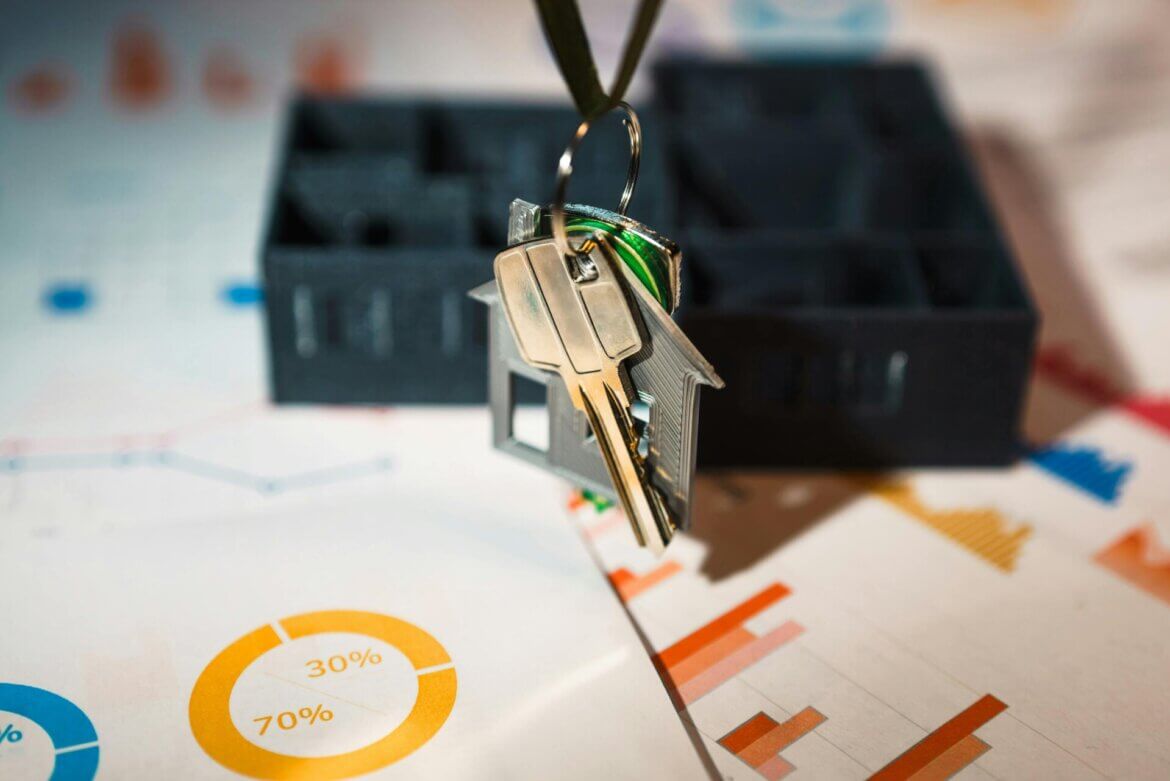Ever wonder if flood zones and mortgages have something to do with each other? You’re not the only one. Climate risks are quietly reshaping mortgage lending across America, and many homebuyers are unaware.
What was once a minor detail now demands attention. Lenders are increasingly concerned about properties facing risks like flooding, wildfires, and extreme weather.
Your ability to get financing, and its cost, depends on factors often overlooked until it’s too late. In this blog, we’ll discuss how climate risks and mortgage lending intersect, and what you’ll learn might change your home-buying strategy.
Why Climate Risk in the Housing Market Matters in Mortgage Lending
Risk-Based Pricing
Lenders assess climate risks (flooding, wildfires) for mortgage approval. High-risk properties may face higher interest rates or fees.
Higher Insurance Premiums
Expect soaring insurance costs in vulnerable areas. These impact your eligibility, as lenders require coverage, making homes more expensive.
Lender Restrictions
Some lenders limit or refuse financing in high-risk zones, often requiring larger down payments, pricing out many buyers.
Changing Loan Terms
Standard 30-year fixed mortgages might be harder to find for risky properties. Lenders may offer shorter terms or adjustable rates.
Federal Program Limitations
Federal loans (FHA, VA) are also adapting, potentially requiring more inspections or limiting options in climate-vulnerable areas.
Understanding the climate change real estate impact is vital for your home-buying strategy. Call Banas Mortgage for expert, trust-worthy advice on navigating climate risks in mortgage lending today!
Common Climate Risks Affecting Homes and Mortgages
Flood-Prone Areas
FEMA maps can be outdated. Use tools like Flood Factor for current and future flood risks. What’s safe today might not be tomorrow.
Wildfire Zones
Wildfire seasons are worsening and expanding. Properties in these areas may struggle to get fire insurance. Check wildfire risk maps.
Rising Sea Levels
Coastal properties face risks from rising sea levels and erosion. Lenders may offer shorter mortgage terms. Research local sea level rise projections.
Extreme Weather
Homes must withstand unpredictable extreme weather. Consider how property durability (roof, foundation) holds up. Factor in potential upgrade costs for climate resilience.
When buying a home, it’s important to understand how climate risks can impact your property and your mortgage lending options.
How Lenders Evaluate Climate Risk in 2025
Mortgage lending trends has come a long way. In 2025, getting a mortgage means lenders are looking closely at climate risks. It’s no longer just about flood maps; they’re using advanced tools to assess a property’s vulnerability.
Professional Climate Risk Assessments
Lenders now use detailed climate risk scores from companies like ClimateCheck or First Street Foundation. These assessments cover not just flooding, but also wildfire risk, drought, extreme heat, and storm vulnerability, using both historical data and future climate projections. Ask your realtor about these scores upfront, as lower risk can mean better mortgage rates and insurance terms.
Building Codes and Construction Standards
Homes built to newer, climate-resilient standards are easier to finance. Lenders check for features like wind-resistant roofs, elevated foundations (in flood zones), fire-resistant materials, and heat-reflective roofing. Investing in these can save you money over time, as many lenders offer discounted rates for homes exceeding minimum codes.
Property Adaptation Features
Investing in smart upgrades can improve your mortgage terms and protect your home. Lenders value features like water management systems, solar panels with battery backups, home hardening (e.g., hurricane shutters), and energy-efficient upgrades. These can lead to lower insurance premiums and better loan terms.
Documentation Requirements
Be ready for more paperwork related to climate resilience. Lenders will likely ask for climate risk assessment reports, proof of property adaptations, specialized insurance, building code compliance, and flood elevation certificates. Creating a “climate resilience portfolio” or any related checklist for your home can make the mortgage process smoother.
Give Banas Mortgage a call and we’ll help you navigate today’s mortgage lending landscape!
Financial Implications of Climate Risk for Homebuyers
Long-Term Costs
Expect higher maintenance costs from extreme weather and increased energy bills. Budget for adaptation expenses like hurricane shutters (estimated $1,000-$5,000) or home elevation (estimated $30,000-$150,000).
Note: These are estimates; always research specifics for your area.
Property Value Depreciation
Homes in climate-vulnerable areas can lose value. Studies show flood-prone properties may sell for less, impacting future resale, refinancing, and home equity. This trend is impacting many regions, not just coastal areas.
Insurance Challenges
Expect skyrocketing premiums, limited coverage, or even denial in high-risk regions. Lenders require insurance, so lack of affordable coverage can make your mortgage unaffordable.
Important: Always research specific costs and availability for any property you consider, especially in areas like Buffalo, WNY, where climate patterns are shifting.
Navigating Mortgage Options in High-Risk Areas
Specialized Lending Programs
Many lenders offer programs rewarding climate-resilient homes (e.g., elevated foundations, impact-resistant roofs). Fannie Mae’s HomeStyle Energy program allows financing for energy/water upgrades. Ask about “resilience mortgages” for better rates.
Government-Backed Mortgages vs. Conventional Loans
- FHA loans: Generally more lenient on location, but require flood insurance in FEMA flood zones.
- VA loans: Offer favorable terms for veterans, even in areas with climate concerns, and often have no down payment.
- Conventional loans: May have stricter requirements and potentially higher rates in high-risk zones.
- USDA loans: Good for rural areas, but have location and income restrictions.
When buying in high-risk zones, government-backed loans often provide more flexibility. These programs often require less down payment, freeing up funds for climate-resilient improvements.
Refinancing Considerations as Climate Risks Evolve
- If you’ve made resilience improvements (like storm shutters), consider refinancing. Lenders may reassess your property’s risk, potentially leading to better rates.
- Watch for changes in flood zone designations. Moving to a lower-risk zone could qualify you for better terms.
- Pay attention to local community initiatives like new flood barriers; these can reduce your home’s risk profile and improve refinancing options.
Want to know more about options that can help you secure the best mortgage lending terms for your home? Call us at Banas Mortgage today!
Protecting Your Investment: What Homebuyers Can Do
Research Climate Risks Before Buying
Don’t just fall for a home’s curb appeal! Before you get too attached, do your homework. Check resources like FEMA flood maps and tools like First Street Foundation’s Risk Factor. These show you not just today’s risks, but projections for decades to come, helping you understand long-term vulnerability.
Also, consider hiring specialized home inspectors who can identify climate-related issues like poor drainage or foundation problems that might not be obvious.
Get the Right Insurance Coverage
Standard homeowners insurance often has gaps when it comes to climate disasters. You might need separate policies for floods, windstorms, or wildfires, depending on your home’s location.
Shop around and compare quotes. Ask insurers directly:
- Is flood insurance needed for this property?
- What specific climate events aren’t covered by my standard policy?
- What’s the cost for additional coverage for specific risks?
- Secure your policy before closing, as coverage can be limited or expensive in high-risk areas.
Consider Future-Proofing Investments
Smart homebuyers view climate-resilient features as investments, not just expenses. When house hunting, look for (or budget for upgrades like):
- Elevated foundations in flood zones.
- Fire-resistant materials in wildfire-prone areas.
- Storm-rated windows and roofing for hurricane regions.
- Energy-efficient systems for extreme temperatures.
These upgrades can save you thousands in repairs later and help maintain your property’s value.
Work with Climate-Savvy Professionals
Not all real estate agents or mortgage brokers understand climate risks. Find professionals who can guide you through climate considerations. Ask potential agents if they’ve helped clients navigate climate risks before and what resources they use to assess property vulnerability.
A climate-informed mortgage broker, like the experts at Banas Mortgage in Buffalo WNY, can help you understand how lenders view properties in your target area and whether you might face higher rates or stricter requirements because of location-specific risks.
Be proactive about climate risks and protect your bigger investments with Banas Mortgage today!
Banas Mortgage: Your Smart Move in Mortgage Lending
The climate risk landscape has fundamentally changed mortgage lending. Environmental factors like flooding, wildfires, and extreme weather now significantly influence how lenders evaluate properties, determine eligibility, and set insurance requirements.
To protect your home investment, be proactive: research a property’s climate risk profile, secure comprehensive insurance, and consider future-proofing upgrades. Work with trusted mortgage professionals who understand these evolving risks.
By staying informed, you can make smarter homebuying decisions that safeguard your financial future.
Ready to navigate the evolving mortgage lending landscape with confidence? Contact Banas Mortgage in Buffalo, WNY, today for expert, trustworthy advice! Visit us at www.banasmortgage.com or call (716) 274-6956.




